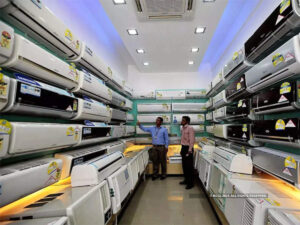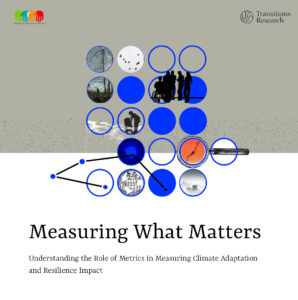The way we move contributes to almost a quarter of greenhouse gas emissions, much of which are derived from cities. Whether we choose to use public transport, walk or cycle, or take a private vehicle to travel contributes to rising greenhouse gas emissions. The way things stand now, the number of cars on the road globally are expected to double by 2030, challenging global sustainability and development goals.
The situation in India is no different. Over the last twenty years, India has experienced a surge in mobility and transportation related emissions, with GHG emissions increasing 224% between 2000 and 2019. Cities, which are rapidly growing, have felt the brunt of this mobility shift, with many cities experiencing unbearable congestion, poor public transportation provision, and rising air pollution. India is at a pivotal moment to shape the future of transport emissions, especially given that only 30% of urban residents rely on private vehicles. Without radical interventions in city design and normative shifts away from cars, we run the risk of driving urban emissions to unsustainable levels, in direct conflict with our net zero and climate goals.
At a recent dialogue hosted by Transitions Research on Transitioning Transport for Low Carbon Urban Futures, panellists from across the globe came together to explore pathways to shift our mobility systems, individual and collective attitudes and transition to low carbon mobility, which they all agree hinges on a modal shift towards non-motorised transport, like cycling and walking, and public transport. This blog illustrates some of the key barriers and opportunities of a low carbon transition in India and developing countries.
The Role of Electrification
There is a push for the electrification of mobility: the emphasis on the uptake of private electric vehicles through strong subsidies and state policies, highlights this dominant approach to tackling mobility-related emissions. However, this transition still prioritises the use of private vehicles and does not sufficiently address the need for a modal shift.
Urban mobility and strategy consultant, Kartikeyan Kuppu, highlighted that the public generally believes that electric vehicles are ‘zero emission’ without realising that this is with reference to only tailpipe emissions – for the first 20,000 km of driving a private electric vehicle, it’s lifecycle emissions (emissions from the production, use and disposal of a product) are actually higher than that of a petrol or diesel car. Therefore, the emissions depend on how you are generating the electricity to charge the cars, whether that is done renewable or through fossil fuels. This means electrification is more of an intermediate step in the right direction, but the true solution is a modal shift to public transport.
Infrastructure Planning for a Modal Shift Towards Public Transport
In India, there is a demand for public transport and non-motorised transport (NMT), and the primary barrier to this modal shift is a lack of infrastructure. Surjyatapa Ray Choudhary, urban design practitioner at Jana Urban Space, explained that currently planners are designing mobility systems around what they see as taking up the most space on roads, which is vehicular traffic, instead of planning mobility around how we move or how we should move. The examples she provided based on the 2011 census were illuminating: 80% of commuters in India travel on foot for distances up to one kilometre. Between two to five kilometres, 75% of trips are either by walking, cycling or public transport. Women primarily take buses or walk as their primary mode of transit. 50% of children walk to school, 18% cycle and 9% of children use public buses. Therefore, she argued that planning and building roads that enable NMT and the use of public transport should be central to infrastructure planning in India and other developing countries with large, growing populations.
We see cities in the Global North pushing for denser, more walkable cities with robust public transport systems with concepts like complete streets and 15-minute cities becoming increasingly popular. Choudhary explained that in order to apply the 15-minute city concept in India, one has to view it as a policy planning process, wherein urban planners survey and identify the services and needs of an area, list them in order of priority, and then advocate for the development of necessary infrastructure. This localised, context-specific approach to urban mobility addresses the need for a just and fair transition in the mobility sector.
Anna Walter-Dockx, a behavioural economist and expert on fostering sustainable habits at Austria’s largest mobility provider ÖBB, added that this modal shift is an opportunity to create a just low carbon transition in the mobility sector. Due to infrastructural and societal barriers, the mobility habits of the wealthiest and the most vulnerable parts of a society are very different. The burden or the effort of engaging in low carbon mobility must be shared by all stratas of society. This requires that NMT and public transport are not only accessible to all, but desirable as well.
How to Achieve Social and Behaviour Change
Some countries that have addressed infrastructural gaps for low carbon mobility but continue to struggle with public buy-in and uptake of modes like public transport. To solve this issue, policymakers need to encourage behaviour change. Dockx highlighted key strategies for encouraging a modal shift.
The first step in encouraging a shift away from private vehicles is to make low carbon mobility easy. This requires a focus on equity, as marginalised groups, especially the urban poor, must have affordable access to public transport. For example, some buses in Chennai are free for women to use. Ease of use can be improved through methods like Mobility-as-a-Service (MaaS). A private vehicle is door-to-door, but public transport and NMT require planning, tickets and schedules – through MaaS, people can input their origin point and destination into their smartphones and have it buy all the tickets required whether for a bus, a city bike service, a train etc. and plan their trips.
The second step is to change societal norms and nudge people towards new modes. This is especially important in contexts like India’s where cars are seen as status symbols. Normative shifts that make public transport and NMT not only accessible to all, but desirable to all, are key. Kuppu and Docx emphasised the practical ways in which this desirability can be achieved by making them socially appealing. The first example was that of the Mumbai local trains, where people are able to use their commute time to sleep, play games, or sing prayers by coordinating with other groups of people to sit in certain compartments. Better still, seeing role models, like the mayor of Bogota, riding around on the metro in Bogota, inspires the residents to take the trains too. As the mayor argues, a really developed country is not one where the poor own cars but one where the rich take public transport. These human aspects of the transition should be at the forefront of policy planning.
Conclusion
Our panellists agreed that the most important step in India’s transition to low carbon mobility should be a concerted effort to incentivize a modal shift to public transport and non-motorised transport. Currently, due to socio-economic factors, a large population uses public transport and NMT, despite adequate infrastructure and incentives. Once that is provided, these behaviours should be incentivized so that all stratas of society find these modes of transport the most convenient and desirable. This will lead to the most significant strides in reducing transport emissions. The dialogue also highlights the many ways in which these ends can be achieved going forth.




